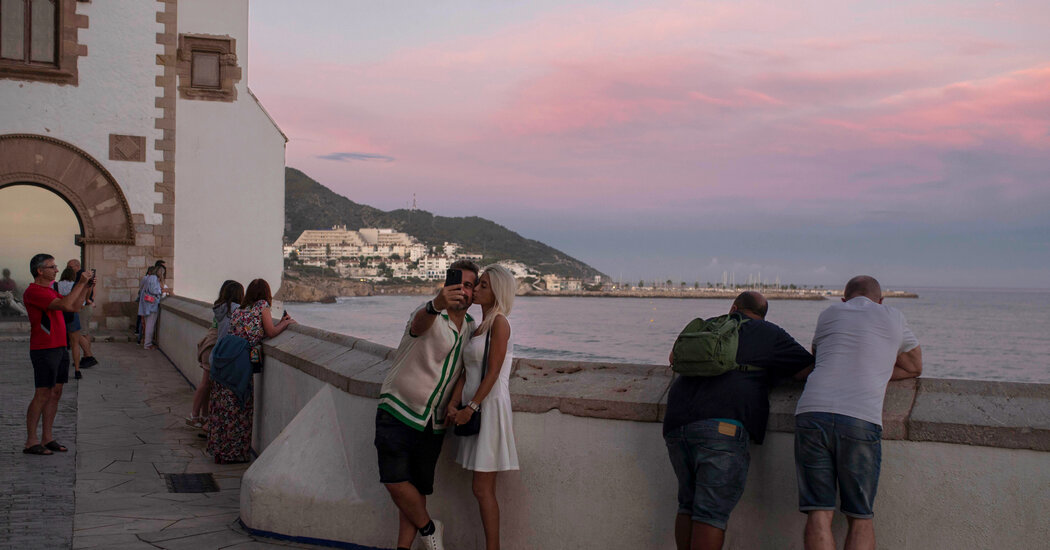Coming out of the pretty little train station in Sitges on a sunny Sunday morning, I took a deep breath and started laughing. Ever since I first visited this Spanish seaside town a half-hour south of Barcelona by train 40 years ago, it’s a destination that’s unfailingly made me happy.
After almost two and a half years away because of the pandemic, it was an ecstatic relief to be back. Fortunately, almost nothing had changed in my absence. Fuchsia blazes of bougainvillea tumbled over the fencing along the train tracks, and the square in front of the station was still shaded by fat palms and wispy tamarind trees. Across the street, pigeons pecked at the breakfast crumbs on the sidewalk around the cafes and bars, and yellow-and-red Catalan flags fluttered in the breeze from the railings of balconies overhead.
Pulling our clattering roller bags behind us, Bruno, my French spouse, and I stopped once or twice on our way to our rental apartment to gape anew at the spectacular Modernismo mansions along the Carrer de Illa de Cuba, as we’ve been doing for 25 years. These are joyous eruptions of Catalan art nouveau architecture — the houses are lavishly decorated with mosaics, tiles, wrought iron and molding, often with floral motifs, and many of them have towers, turrets and other fanciful features.
They were mostly built by the Americanos, as the locals called the Sitgean emigrants who made their fortunes in Cuba or Puerto Rico and then returned home, many of them at the end of the Spanish-American War. The 69 mansions that survive are landmarked and protected today, and several of them have become hotels.
For me they’ve always epitomized the admirable way Catalan culture is receptive to creative anarchy as seen in the works of an architect like Antoni Gaudí, an artist like Salvadore Dalí, or even a chef like Ferran Adrià. And in Sitges, they also signal the town’s longstanding tolerance of human differences, including its acceptance of gay travelers, which might be branded as eccentric, or worse, elsewhere.
I’d booked a table at Costa Dorada, a restaurant on the esplanade overlooking the crescent-shaped wave-lapped Platja de Sant Sebastià, one of the most popular beaches in Sitges. We wouldn’t even need a menu when we arrived, because we both craved the red-shrimp carpaccio and squid ink fideuà, stubby vermicelli noodles cooked in seafood bouillon with squid ink and garnished with chunks of cuttlefish, baby clams and peeled white shrimp, served…
Click Here to Read the Full Original Article at NYT > Travel…
